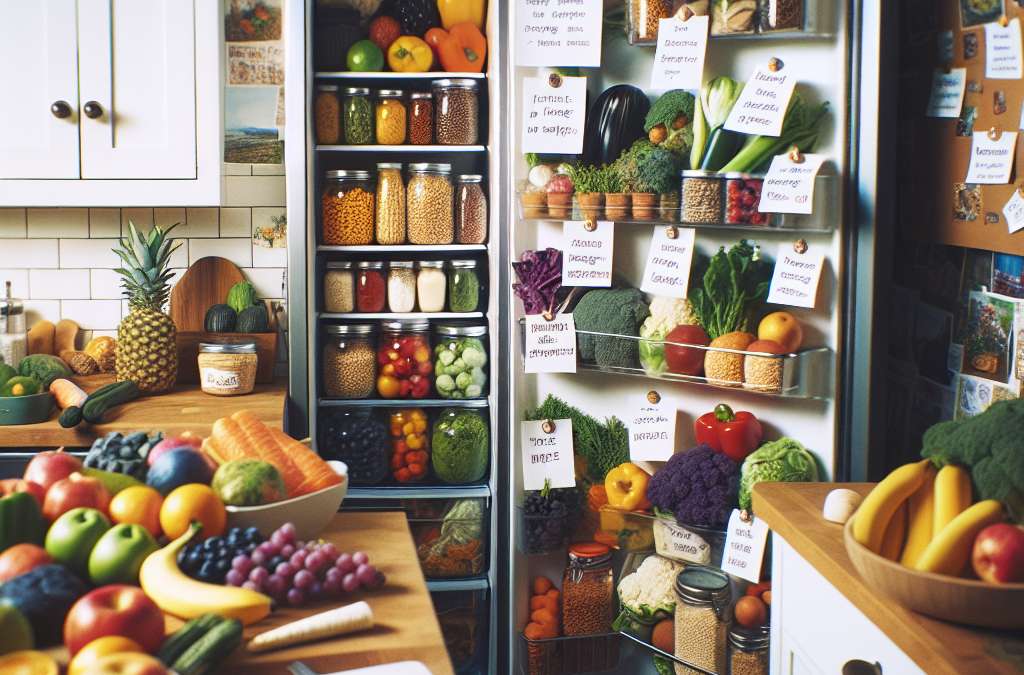Understanding the Whole Foods Approach
What Are Whole Foods?
When I first heard about whole foods, I was like, “What even are they?” Basically, it’s about eating foods that are as close to their natural form as possible. Think fruits, veggies, nuts, seeds, whole grains, and legumes. These foods are usually free from processing, additives, and preservatives, which is a big win for anyone looking to live healthier.
I’ve personally found that embracing whole foods can significantly boost your energy levels. Instead of that sluggish feeling after a fast-food meal, you might just find that you feel more vibrant, motivated, and ready to conquer the day. I’ve noticed a huge change in my mood and productivity since switching my diet around.
Plus, whole foods are super versatile! You can whip up a hearty meal or a quick snack, and the best part? You don’t have to be a gourmet chef to make it taste great. It’s all about using quality ingredients that speak for themselves!
The Benefits of Whole Foods
You might be wondering why all the fuss about whole foods? For starters, they’re packed with nutrients that our bodies crave. You’re getting vitamins, minerals, fiber, and antioxidants all in one go! Since I switched, I’ve noticed a clearer mind and better digestive health. It’s like my body finally got the memo about what it needs.
Health benefits aside, incorporating whole foods can also lead to weight management. By focusing on nutrient-dense foods rather than calorie-dense junk, I found it easier to maintain a healthy weight without counting every calorie. It feels way more sustainable than any diet I’ve tried!
Lastly, there’s something fulfilling about cooking with whole foods. It encourages creativity in the kitchen. I’ve started experimenting with new recipes and rediscovering classic dishes in healthier ways – never thought I’d enjoy cooking so much!
Overcoming Challenges
Now, let’s be real. Transitioning is not always sunshine and rainbows. I had my fair share of challenges, too! One of the biggest hurdles was breaking the habit of convenience food. Ready-to-eat meals are just so tempting when you’re tired, right?
However, I found that prepping meals ahead of time really helped. I’d dedicate a few hours on the weekend to chop veggies, cook grains, and stash away some healthful snacks. It made weeknight dinners so much easier and kept me from reaching for the frozen pizza.
Another challenge is the sheer variety of foods available. It can be overwhelming! I suggest starting small—focus on one ingredient at a time. Explore different ways to use it, and before you know it, you will build a solid repertoire of wholesome meals you love.
Making the Switch Gradually
Start with Small Changes
One of the best pieces of advice I received was to take baby steps. I didn’t dive headfirst into a whole foods lifestyle overnight. Instead, I began adding one new whole food item into each meal and replacing at least one processed item daily. This approach made the transition feel manageable and less daunting.
For instance, I started my mornings with oatmeal topped with fresh fruit instead of sugary breakfast cereals. That little shift made a big difference in how I felt throughout the day. If cooking isn’t your jam yet, adding fruits to your snacks is a great place to start!
Every small change adds up, and soon you’ll notice that you want to explore even more whole foods. Trust me, your body will thank you!
Experiment and Discover
One thing I learned? Don’t be afraid to get a little adventurous! Whole foods offer a world of flavors and textures. I made it a goal to try at least one new vegetable or grain each week. Some were a hit, like quinoa, while others had me scratching my head (looking at you, kohlrabi!).
Cooking classes or local farmers’ markets are great places to discover new ingredients. I found that interacting with local farmers not only made my shopping experience more enjoyable, but they also shared amazing tips on how to cook various fruits and veggies. Learning from the pros suddenly made me feel like a whole foods chef!
It’s all about finding joy in the process. After a while, I began to look forward to shopping for whole foods and trying new recipes rather than dreading it. Excitement over ingredients can be contagious!
Listening to Your Body
During my transition, I became more aware of what my body liked and didn’t appreciate. Keeping a food journal helped immensely! It’s worth noting how you feel after eating certain meals or snacks. Is there energy? Is it making you feel sluggish? Reflecting on my choices taught me to listen to my body, and trust me, it’s made all the difference.
This practice also helped me cut out foods that were making me feel blah. If something wasn’t serving my health or energy levels, it was out! This newfound awareness has allowed me to refine my whole foods intake further and choose dishes that truly fuel my lifestyle.
Get an Amazing Discount on the Best Certified Organic Whole Food Supplement!
Remember, no one is perfect. There are days you’ll want that chocolate cake or a slice of pizza, and that’s totally okay! Just make sure to balance it out with those nutrient-dense whole foods on other days.
Finding Support and Community
Join Groups or Classes
Finding a community that shares your interests can be a game changer. I looked into local health groups and classes in my area, which made my journey feel less lonely. Whether it’s a cooking class or a nutrition workshop, being around like-minded folks inspires you to stay motivated and learn more.
Another cool thing? Sharing experiences and recipes can help you stick to your commitment. Plus, it’s always nice to swap ideas and find new ways to enjoy whole foods that you may not have considered!
Online forums and social media groups can also provide guidance and support. Just make sure to find positive spaces that encourage healthy habits without judgment.
Share Your Journey
Sharing your journey not only solidifies your commitment, but it also opens up discussions with others who may be considering similar changes. I started a blog where I could document my story and the recipes I was trying out. It became an outlet for my creativity and a way to connect with others.
Encouraging friends and family to join you on this journey makes it way more enjoyable. Decide to cook a meal together or challenge each other to try new recipes. You may just inspire them to make healthier choices, too!
Plus, celebrating your wins—big or small—can motivate others. You’d be surprised at how many people resonate with your story and may even join in on the whole foods lifestyle!
Stay Open-Minded
Remember, every person’s journey is different. What works for me may not work for you, and that’s perfectly okay! Keep an open mind and be flexible. You might find that certain whole foods don’t mesh with your taste buds or lifestyle, and that’s part of the learning process.
If something doesn’t work out, don’t beat yourself up over it. Just try something else! Whole foods aren’t a one-size-fits-all solution—what’s important is finding what suits you and your body best.
Being kind to yourself during this transition will make it much more enjoyable. Celebrate each step you take toward a healthier lifestyle. You’ve got this!
Conclusion
Transitioning to a whole foods lifestyle can be an enriching experience filled with discovery and self-awareness. By understanding what whole foods are, making gradual changes, finding support, and staying open-minded, you can not only make this a smoother process but enjoy the journey along the way.
The beauty of eating whole foods is that it can fit seamlessly into your life while enhancing your overall well-being. Remember that it’s not just about eating; it’s about nourishing your body and enjoying the adventure that food can be!
FAQs
1. What are whole foods?
Whole foods are natural foods that are minimally processed and free from artificial ingredients and additives. They include fruits, vegetables, grains, nuts, and legumes.
2. How can I start incorporating whole foods into my diet?
Begin by making small changes. Add one whole food item to your meals each day and gradually replace processed snacks with fruits or nuts.
3. What if I don’t know how to cook with whole foods?
Try taking a cooking class or watching online tutorials. Experimenting with new recipes and ingredients can also be a fun way to learn!
4. How do I stay motivated during this transition?
Join a community or support group to share experiences, inspire each other, and celebrate achievements together. Sharing your journey can keep you engaged.
5. Is it normal to crave processed foods while transitioning?
Absolutely! It’s a common hurdle. Just listen to your body and try to find balanced meals that satisfy those cravings without falling back into old habits.




